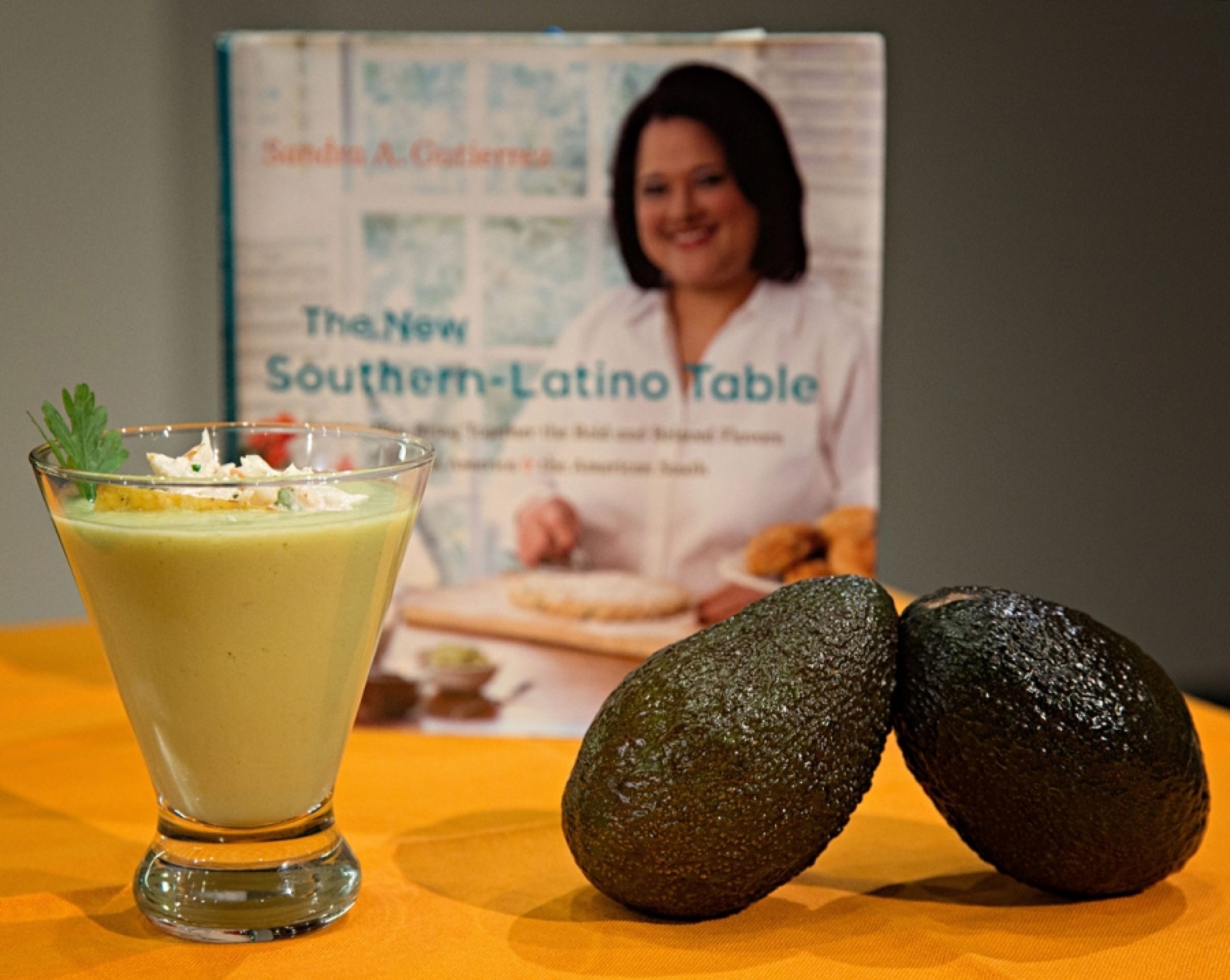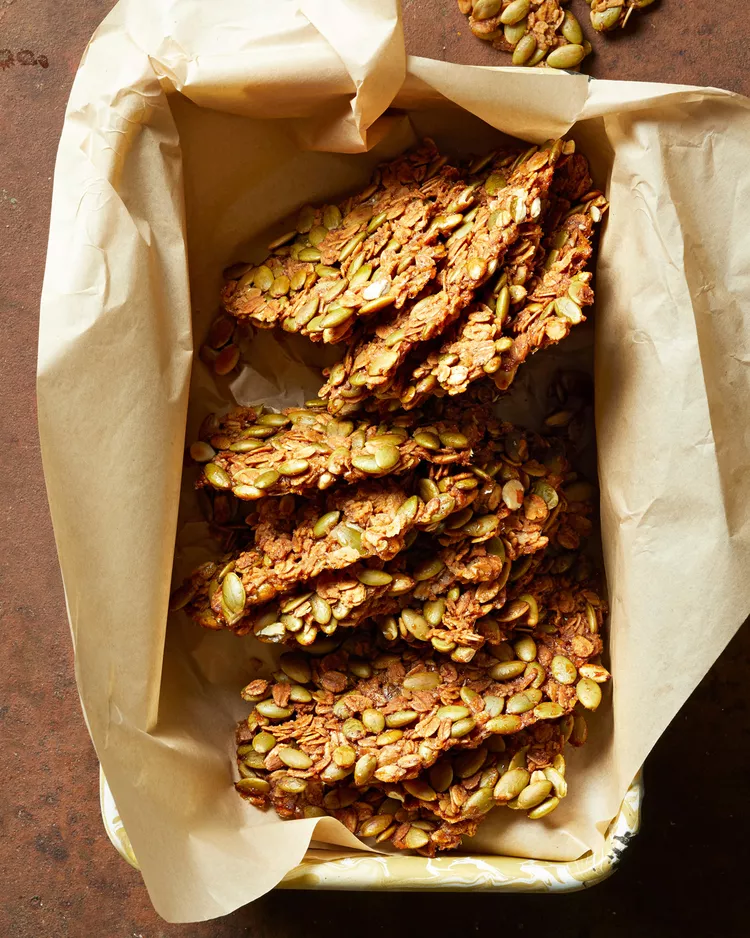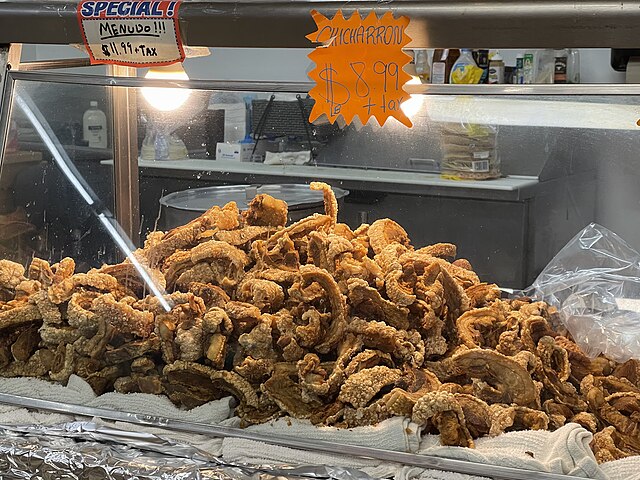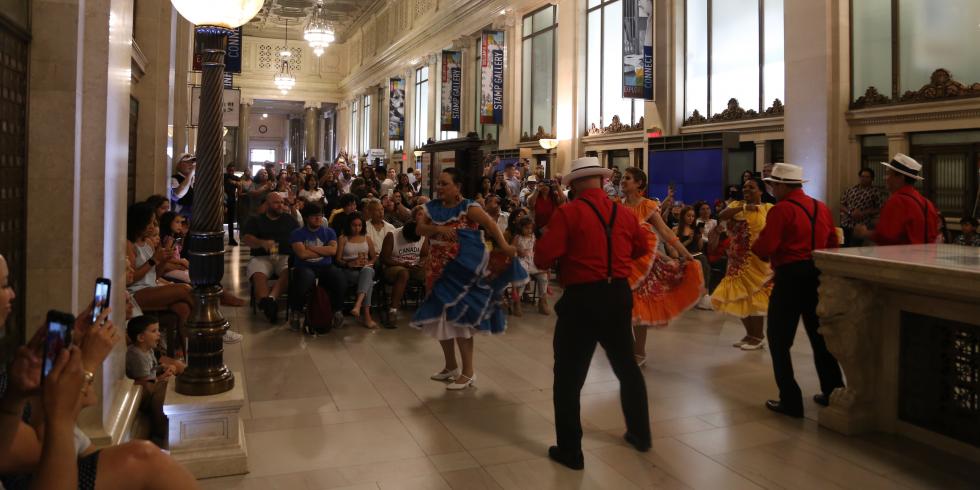A Day At the Mall
Chronicles from the Nuevo South
By Sandra Gutierrez

Photos Courtesy of the National Museum of American History
I was on my way to the Coulter Performance Plaza inside the National Museum of American History, where I was slated to do a cooking demonstration on the New Southern-Latino culinary movement as part of the lineup for the museum’s “Cooking Up History” exhibit. It would be a surreal experience because I was set to present in the area of the museum that houses Julia Child’s kitchen: a cook’s hallowed ground. At the same time, D.C. was preparing for a weekend of rallies, marches, parades, and counter-protests featuring the very same people who, whether they know it or not, have been part of the culinary movement I was there to talk about. As separated as the factions were philosophically, I hoped to prove that at the table they were already one.
All of the major streets surrounding the Mall were closed to vehicular traffic. Every crossroad was blocked with armored vehicles, tanks, government snowplows, and police patrols. The area stretching from Capitol Hill to the White House was patrolled by hundreds of police officers (on foot and on horses) and guards wearing military fatigues. A large truck—like those you see during political campaigns— outfitted in red, white, and blue, played “God Bless America” over giant speakers as it traveled the empty roads.
Of course, rallies and protests happen frequently in our nation’s capital, and according to the people I talked to along my walk, these “reunions of the populace” are becoming more frequent of late. As two guys who worked at a parking deck told me, paralyzed traffic and inaccessibility affect businesses—especially theirs. I noticed what they meant. Cafés and restaurants were empty, taxis had a hard time accessing the hotels due to re-routing, and metro stations were closed.
Walking across the vacant streets of this normally busy place was eerie—I didn’t have to navigate through hoards of people or wait for green lights to cross major intersections. At one point, I realized that if any violence were to erupt from the protests, my only defense would be a tray filled with three pounds of pumpkin seed brittle and my bright green chef’s coat.

Photo by Jacob Fox
Parking was prohibited near the museums, so I had a long walk ahead of me. The morning was cool and the sun was out, so I enjoyed the leisurely stroll across Pennsylvania Avenue and down 10th street, flanked by cherry trees and gargantuan flowerpots filled with clusters of red begonias. Yet, it did not escape my mind that this would be a day filled with contradictions of the kind that seem to follow me throughout my life, as politics and food intersected once more.
By the time I reached the museum, a gathering called the “Mother of all Rallies” (kid you not) was taking place. The pro-Trump rally was billed as an event for attendees to “stand united to defend American culture and values.” There was a stage in the middle of the Mall flanked by flying American flags, people wearing red t-shirts that spelled MOAR in white lettering, and plenty of reporters with cameras in tow. A crowd had begun to assemble. At the same time, another group of protesters carrying posters condemning the alleged Russian interference in the presidential election had begun to gather. Meanwhile, a parade known as Fiesta DC featured dancing troupes and marching bands in celebration of Latinx culture. And then there were the clowns. The “Juggalos,” fans of the Insane Clown Posse, were also in town, wearing clown makeup and protesting the FBI’s designation of their group a gang.
That these different groups would come together at the very moment when I was supposed to be at the National Museum of American History was both bizarre and a little humorous.
I was prepared to talk about the food that Southerners and Latinos have in common and the blending of our cultures at the table. My presentation focused on the very real culinary movement showcasing harmony among different peoples. My “call to forks,” if I may, is one of unity and community, one that proves we’ve already come together at the table, one that invites us all to understand each other better while we share meals.
However, on the streets I watched one group of people celebrate multiplicity while the other clamored to uphold sameness. One side celebrated diversity with waving flags, while the other rallied to preserve only one flag. And there I was, standing in the middle of them both—philosophically and literally. I could cry or I could laugh. (Time to send in the clowns . . .)
My presentation, led by Katharine Mead, Program Manager for the Smithsonian Institution, was co-sponsored by the National Museum of African American History and Culture, with funding provided by the Latino Initiatives Pool (administered by the Smithsonian Latino Center). It was fitting, then, that on a large stage at the center of one of the most famous museums of our country, stood a white historian, an African-American scholar, and a Latina food writer—all of us getting along deliciously.
Dr. Ariana Curtis, Curator for Latino History and Culture at the National Museum of African American History and Culture, introduced our conversation about the “Nuevo South.” What does it mean when the South changes demographics and when new ingredients are added to our pantries? Why does the socio-anthropological evolution of food matter?
Ashley Rose Young, a historian for the Smithsonian Institution, guided me through our conversation. She asked how in 1996, as more Latinos began to settle in the South, I discovered the emergence of a new pathway in Southern foodways. While we talked, I cut lard into flour mixed with powdered chicharrones (pork rinds).

Chicharrones, El Coyote Market & Deli, by Sarah Stierch
We discussed migration, activism, and this culinary movement in the Nuevo South as I added fresh buttermilk to make dough. We talked while I cooked recipes that showcased our marriage of cultures on a plate. As a fresh batch of pork rind biscuits baked, I blended smooth avocado-buttermilk soup and topped it with crab salad nachos.
At the end of our conversation, it dawned on me that this country was formed by the same contradictions that were represented outside on the streets. After all, the U.S. is a great quilt of many different patches. And so the melting in our pot continues as this country made of immigrants regenerates.

Public Program, Latino Initiatives Pool via Smithsonian Museum of the American Latino
I had to laugh when some of the same people who were outside rallying came into the museum to have lunch. They were peaceful. On the menu that day were my Pork Rind Biscuits and large squares of Pumpkin Seed Brittle. People seemed to enjoy their meals without giving the food another thought. Gone were any outward displays of the political beliefs expressed on the streets—because in the end, food is a catalyst that brings people together. As long as different cultures continue to merge on our plates, I have hope that our rifts will continue to disappear. Despite all of the people making noise outside the museum that day, dividing lines were blurring inside, proving that all makes sense at the table, as long as it tastes good.

